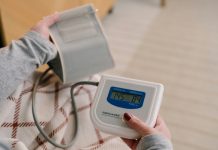
In a new study, researchers found that blood pressure monitoring might one day become as easy as taking a video selfie.
The research was conducted by a team from the University of Toronto.
High blood pressure is a major contributor to cardiovascular disease—a leading cause of death and disability.
Currently, nearly half of American adults have high blood pressure and many don’t even know they have it.
To manage and prevent high blood pressure, regular monitoring is essential. Cuff-based blood pressure measuring devices are highly accurate, but they are inconvenient and uncomfortable.
Finding an accessible, easy way to monitor blood pressure is important for people to reduce the risk of heart attack and stroke.
In the new study, the team measured the blood flow of 1,328 Canadian and Chinese adults by capturing two-minute videos using an iPhone equipped with transdermal optical imaging software.
They found transdermal optical imaging could measure blood pressure by detecting blood flow changes in smartphone-captured facial videos.
Ambient light penetrates the skin’s outer layer allowing digital optical sensors in smartphones to visualize and extract blood flow patterns, and transdermal optical imaging models can use the patterns to predict blood pressure.
The team compared systolic, diastolic and pulse pressure measurements captured from smartphone videos with blood pressure readings using a traditional cuff-based continuous blood pressure measurement device.
They found that on average, transdermal optical imaging predicted systolic blood pressure with nearly 95% accuracy and diastolic blood pressure with pulse pressure at nearly 96% accuracy.
The technology’s high accuracy is within international standards for devices used to measure blood pressure.
The findings show that there may be an option of a contactless and non-invasive method to monitor blood pressures conveniently.
Future work needs to confirm the results and show this method can be used to measure blood pressures in clinical settings.
The lead author of the study is Kang Lee, Ph.D., professor and research chair in developmental neuroscience at the University of Toronto in Canada.
The study is published in Circulation: Cardiovascular Imaging.
Copyright © 2019 Knowridge Science Report. All rights reserved.



